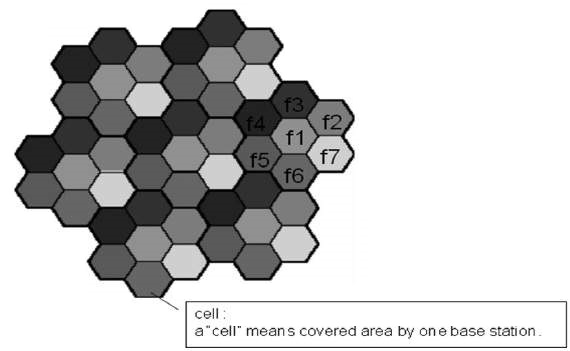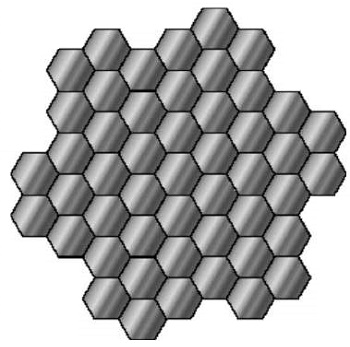
- CDMA - Home
- CDMA - Introduction
- CDMA - Channels
- CDMA - Multiple Access Methods
- CDMA - FDMA Technology
- CDMA - TDMA Technology
- CDMA - Technology
- CDMA - Network
- CDMA - Techniques
- CDMA - Spread Spectrum
- CDMA - Fading
- CDMA - Near-Far Problem
- CDMA - Power Control
- CDMA - Frequency Allocation
- CDMA - Handoff
- CDMA - Interferences
- CDMA Useful Resources
- CDMA - Quick Guide
- CDMA - Useful Resources
- CDMA - Discussion
CDMA - Frequency Allocation
The major capacity advantage of CDMA is that it reuses the same allocated frequency in every sector of every cell. In IS-136 and analog cellular systems, there is a seven cell repeat factor, with three sectors. This means that only one out of every 21 channels is available to each sector. CDAM is designed to share the same frequency in each sector of each cell. For each user that uses cdma2000 coding rather than IS-95, the system is more efficient.
In FDMA or TDMA, radio resource is allocated not to interfere among neighbor cells −
- Neighbor cells cannot use the same (identical) frequency band (or timeslot).
- The left figure shows the simple cell allocation with seven bands of frequency.
In actual situation, because of complicated radio propagation and irregular cell allocation, it is not easy to allocate frequency (or timeslot) appropriately.

In a CDMA system against this, since all users share the same frequency, the arrangement of the frequency is not an issue. This is the biggest advantage of CDMA technology.

In CDMA, identical radio resource can be used among all cells, because CDMA channels use same frequency simultaneously.
- Frequency allocation in CDMA is not necessary.
- In this sense, CDMA cellular system is easy to design.